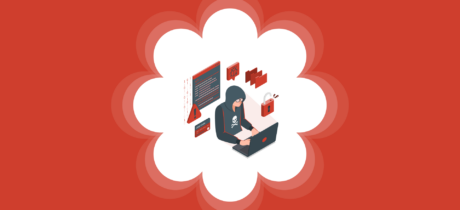
Top WordPress Security Threats and How to Counter Them
Table of Contents
WordPress is a widely used CMS that powers a vast number of websites. However, its popularity also makes it a target for various security threats. From password hacking to DDoS attacks, WordPress websites are vulnerable to a range of risks. As a writer with expertise in creating engaging blog posts, I understand the importance of addressing these threats and providing solutions.
In order to counter these security risks, there are several measures that WordPress users can take. Creating strong passwords, regularly updating WordPress and plugins, and using security plugins are crucial steps. Additionally, changing the database prefix, installing the Inactive Logout plugin, and utilizing CDN services can further enhance website security. Regularly backing up the website is also essential in case of a security breach.
Securing a WordPress website not only protects against security breaches but also helps maintain customer trust. By implementing these security measures, users can safeguard their websites and ensure a safe browsing experience for their visitors. With my experience in writing engaging and SEO-optimized content, I aim to provide valuable insights into WordPress security and empower website owners to protect their online presence effectively.
Key Takeaways
- WordPress is a popular CMS with a large user base, but it is vulnerable to various security threats.
- Users can protect their WordPress websites by implementing security measures such as strong passwords, regular updates, security plugins, and CDN services.
- Regular backups are crucial in case of a security breach and to ensure website recovery.
- It is important to address common security issues like weak passwords, malware infections, XSS vulnerabilities, and outdated software.
- Choosing a reliable hosting provider and following best security practices should be a top priority for website owners.
Introduction
Welcome to our comprehensive guide on the top WordPress security threats and how to counter them. As a popular Content Management System (CMS), WordPress is widely used by website owners around the world. However, its popularity also makes it a prime target for cyberattacks and security breaches. In this section, we will explore the various security threats that WordPress websites face and provide practical tips on how to protect your site from these threats.
The Vulnerabilities of WordPress
WordPress is susceptible to several security threats that could compromise the integrity and security of your website. Some of the common threats include:
- Password Hacking: Weak passwords can easily be cracked by hackers, granting them unauthorized access to your WordPress admin area.
- SQL Injections: Attackers can manipulate input fields on your website to inject malicious SQL code into your database, potentially leading to data breaches or unauthorized access.
- Database Attacks: Hackers may attempt to gain access to your WordPress database, where sensitive information such as user data and login credentials are stored.
- Brute Force Attacks: In a brute force attack, hackers use automated tools to repeatedly guess login credentials until they find the correct combination, gaining unauthorized access to your WordPress site.
- Hijacking: Attackers may try to hijack your WordPress session or user accounts, allowing them to impersonate legitimate users and perform malicious activities.
- Cross-Site Scripting (XSS): XSS attacks involve injecting malicious scripts into your website, which can be executed when unsuspecting users visit your site, potentially compromising their personal information.
- Distributed Denial-of-Service (DDoS) Attacks: DDoS attacks overload your website’s server with an excessive amount of traffic, rendering it inaccessible to legitimate users.
Countering WordPress Security Threats
While the list of potential threats may seem daunting, there are effective measures you can take to safeguard your WordPress website. Consider implementing the following security practices:
1. Strong Passwords and Two-Factor Authentication
Creating strong, unique passwords for your WordPress admin accounts is vital. Avoid using common phrases or easily guessable combinations. Additionally, enabling two-factor authentication adds an extra layer of security by requiring an additional verification step for logins.
2. Regular Updates and Security Plugins
Keeping your WordPress core, plugins, and themes up to date is crucial in addressing known vulnerabilities. Additionally, installing reputable security plugins can provide an added layer of protection by monitoring and blocking potential threats.
3. Change Database Prefix and Use Inactive Logout Plugin
Changing the default WordPress database table prefix from “wp_” to a custom one can make it harder for attackers to target your database. Additionally, installing the Inactive Logout plugin automatically logs out idle users, reducing the risk of session hijacking.
4. Preventing Cross-Site Scripting (XSS) Attacks
To prevent XSS attacks, ensure you are using the latest version of WordPress and employ properly written code that sanitizes user input. Additionally, consider using security plugins specifically designed to mitigate XSS vulnerabilities.
5. Regular Backups
Regularly backing up your WordPress website is essential in case of a security breach. It allows you to restore your site to a previously known secure state, minimizing potential damage.
6. Monitor and Mitigate DDoS Attacks
Investing in a quality web hosting provider that offers DDoS mitigation services can help protect your website from these attacks. Monitoring your website for suspicious activity and implementing Content Delivery Network (CDN) services can also be effective countermeasures.
7. Preventing SQL Injections
To prevent SQL injections, put restrictions on form submissions, validate user input, and use security plugins that offer protection against this specific attack vector.
8. Malware Scans and Monitoring
Regularly scanning your WordPress website for malware and monitoring analytics can help identify potential security breaches. If malware is detected, taking immediate action to remove it and restore your site’s integrity is crucial.
9. HTTPS for Enhanced Security
Running your website over HTTPS instead of HTTP provides an additional layer of security. It encrypts data transmitted between your website and users, protecting sensitive information and boosting your site’s security and SEO.
10. Phishing Attack Prevention
Utilize security plugins that monitor site activity and block suspicious users to help prevent phishing attacks. Regularly monitoring your website for signs of phishing activity and promptly addressing any suspicious behavior is also important.
11. Choose a Reliable Hosting Provider
Selecting a reputable and secure hosting provider is essential for maintaining the security of your WordPress website. Conduct thorough research and choose a provider with a strong track record in security.
Conclusion
Securing your WordPress website is crucial to protect against security breaches and maintain the trust of your website visitors. By implementing the recommended security practices outlined in this guide, you can significantly reduce the risk of falling victim to common WordPress security threats. Remember, security should always be a top priority for website owners.
For more detailed information on WordPress security, you can refer to the WPBeginner website.
Common WordPress Security Threats
WordPress is a popular Content Management System (CMS) that powers a large number of websites worldwide. However, like any other platform, WordPress is not immune to security threats. It is important for website owners to be aware of the potential risks and take necessary precautions to protect their WordPress sites from these threats. In this section, we will discuss some of the common security threats that WordPress websites face and explore effective ways to counter them.
Password Hacking
One of the most common security vulnerabilities is weak passwords. Many users still use easily guessable passwords, such as “123456” or “password.” These weak passwords make it easier for hackers to gain unauthorized access to WordPress websites. To counter this threat, it is crucial to create strong and unique passwords for all user accounts. A strong password should consist of a combination of uppercase and lowercase letters, numbers, and special characters. Additionally, enabling two-factor authentication adds an extra layer of security by requiring a second verification step, such as a code sent to the user’s mobile device.
SQL Injections
SQL injections are another common security threat to WordPress websites. These attacks occur when an attacker injects malicious SQL code into a website’s database query, allowing them to manipulate or extract sensitive information. To prevent SQL injections, website owners should put restrictions on form submissions and user inputs. Additionally, using security plugins specifically designed to protect against SQL injections can provide an added layer of security.
Database Attacks
WordPress websites are also vulnerable to database attacks, where hackers attempt to gain unauthorized access to the website’s database. Once inside, they can manipulate or steal sensitive information, such as user credentials or financial data. To counter database attacks, it is important to regularly update WordPress and all installed plugins to the latest versions. Developers often release security patches and bug fixes with these updates, closing any vulnerabilities that could be exploited by attackers.
Brute Force Attacks
Brute force attacks involve hackers repeatedly attempting different username and password combinations until they find the correct credentials to gain access to a WordPress site. To protect against brute force attacks, it is important to use strong passwords and limit the number of login attempts. WordPress security plugins can help implement these restrictions and provide additional protection against brute force attacks.
Hijacking
Hijacking is a type of attack where an attacker gains control over a WordPress website by exploiting vulnerabilities in the site’s code or plugins. Once hijacked, the attacker can perform malicious activities, such as defacing the website or injecting malware. To prevent hijacking, website owners should regularly update WordPress, themes, and plugins to the latest versions. Using security plugins that scan for vulnerabilities and suspicious activities can also help detect and prevent hijacking attempts.
Cross-Site Scripting (XSS)
Cross-Site Scripting (XSS) is a vulnerability that allows attackers to inject malicious scripts into web pages viewed by other users. These scripts can be used to steal sensitive information or perform unauthorized actions on the website. Preventing XSS attacks involves using the latest version of WordPress and well-written code that follows security best practices. Additionally, using security plugins that automatically detect and block XSS attempts can provide an extra layer of protection.
DDoS Attacks
Distributed Denial-of-Service (DDoS) attacks aim to overwhelm a website’s server with a flood of traffic, rendering the site inaccessible to legitimate users. To mitigate DDoS attacks, website owners can utilize Content Delivery Network (CDN) services that help distribute traffic and absorb the impact of the attack. Additionally, monitoring for suspicious activity and investing in quality web hosting that can handle high traffic volumes can help protect against DDoS attacks.
In conclusion, securing a WordPress website is crucial to protect against security breaches and maintain customer trust. By being aware of common security threats and implementing the recommended countermeasures, website owners can significantly enhance the security of their WordPress sites. It is important to regularly update WordPress and plugins, use strong passwords, employ security plugins, and stay vigilant against potential threats. Remember, security should always be a top priority for website owners.
Countermeasures for WordPress Security Threats
WordPress is a popular content management system (CMS) used by millions of websites worldwide. However, its popularity also makes it a prime target for hackers and malicious attacks. To ensure the security of your WordPress website, it is essential to implement effective countermeasures against potential threats. In this section, I will discuss some key countermeasures that can help protect your WordPress site from security vulnerabilities and breaches.
Creating Strong Passwords
One of the simplest yet most effective ways to enhance the security of your WordPress website is by creating strong passwords. Weak passwords are a common security issue and can be easily exploited by hackers. To counter this, I recommend using complex passwords that include a combination of uppercase and lowercase letters, numbers, and special characters. Additionally, consider enabling two-factor authentication (2FA) for an extra layer of security.
Regularly Updating WordPress and Plugins
Regular updates are crucial for maintaining the security of your WordPress site. WordPress and its plugins are constantly being updated to patch security vulnerabilities and address any potential loopholes. By regularly updating your WordPress core and plugins to their latest versions, you can ensure that your site is equipped with the latest security features and fixes.
Using Security Plugins
Security plugins are powerful tools that can further enhance the security of your WordPress website. These plugins offer a range of features such as malware scanning, firewall protection, and intrusion detection. Popular security plugins like Sucuri and Wordfence provide comprehensive security measures to safeguard your site against potential threats. By installing and configuring these plugins, you can add an extra layer of defense to your WordPress site.
Changing the Database Prefix
Changing the default database prefix from “wp_” to a unique and random prefix can help protect your WordPress site from SQL injection attacks. SQL injections involve inserting malicious code into your site’s database queries, potentially leading to unauthorized access and data breaches. By changing the database prefix, you make it harder for attackers to exploit any potential vulnerabilities.
Installing the Inactive Logout Plugin
The Inactive Logout plugin is a useful tool for automatically logging out inactive users from your WordPress site. This plugin helps prevent unauthorized access and session hijacking by terminating inactive sessions after a specified period of time. By installing and configuring this plugin, you can minimize the risk of unauthorized access to your site.
Utilizing CDN Services
Content Delivery Network (CDN) services can not only improve the performance and speed of your WordPress site but also provide an additional layer of security. CDNs distribute your site’s content across multiple servers, reducing the risk of DDoS (Distributed Denial of Service) attacks. By implementing a CDN, you can mitigate the impact of DDoS attacks and ensure the availability of your site even during high traffic periods.
Regularly Backing Up the Website
Regardless of the security measures in place, it is crucial to regularly back up your WordPress website. In the event of a security breach or any other unforeseen circumstances, having a recent backup can help you quickly restore your site to its previous state. There are various backup plugins available that automate the backup process and allow you to schedule regular backups.
In conclusion, safeguarding your WordPress site against security threats is of utmost importance to protect your valuable data and maintain the trust of your visitors. By implementing the countermeasures discussed in this section, such as creating strong passwords, regularly updating WordPress and plugins, using security plugins, changing the database prefix, installing the Inactive Logout plugin, utilizing CDN services, and regularly backing up your website, you can significantly enhance the security of your WordPress site and minimize the risk of potential security breaches. Remember, securing your WordPress website should be a top priority as it directly impacts the overall security and integrity of your online presence.
For more information on WordPress security and best practices, please refer to Hostinger’s WordPress Security Issues guide.
Importance of Securing a WordPress Website
When it comes to running a WordPress website, security should be your top priority. With a large number of websites running on WordPress, it has become a prime target for hackers and malicious attacks. Securing your WordPress website is crucial not only to protect against security breaches but also to maintain customer trust. In this section, we will discuss the importance of securing a WordPress website and explore some of the top security threats faced by WordPress users.
Protecting against security breaches
WordPress is vulnerable to various security threats, including password hacking, SQL injections, database attacks, brute force attacks, hijacking, cross-site scripting (XSS), and DDoS attacks. It’s important to understand these threats and take proactive measures to counter them.
One of the most common security issues is weak passwords. A strong password is the first line of defense against unauthorized access. I recommend creating complex passwords that include a combination of uppercase and lowercase letters, numbers, and special characters. Additionally, enabling two-factor authentication adds an extra layer of security to your WordPress login.
Regularly updating WordPress and its plugins is another crucial step in protecting your website. Developers constantly release updates to fix security vulnerabilities and improve the overall performance of their products. By keeping your WordPress installation and plugins up to date, you can minimize the risk of security breaches.
Using security plugins can also enhance the security of your WordPress website. These plugins provide additional layers of protection by implementing security measures such as firewall protection, malware scanning, and login attempt limiting. Popular security plugins like Sucuri and Wordfence offer comprehensive security features to safeguard your website.
To prevent cross-site scripting (XSS) attacks, it’s important to use the latest version of WordPress and ensure that your code is properly written. XSS vulnerabilities can allow attackers to inject malicious scripts into your website, potentially compromising user data and damaging your reputation. By following best coding practices and using security plugins, you can mitigate the risk of XSS attacks.
Regularly backing up your website is essential in case of a security breach. Having a recent backup ensures that you can quickly restore your website to its previous state and minimize downtime. Many hosting providers offer backup services, but it’s recommended to create your own backups for added safety.
Maintaining customer trust
Securing your WordPress website not only protects your data but also maintains customer trust. In today’s digital landscape, customers are increasingly concerned about the security of their personal information. A security breach can lead to the loss of customer trust, damage your brand reputation, and result in financial losses.
By implementing robust security measures, you demonstrate your commitment to protecting customer data. Customers are more likely to trust and engage with a website that prioritizes security. This trust can lead to increased conversions, customer loyalty, and positive word-of-mouth recommendations.
To summarize, securing a WordPress website is of utmost importance. By understanding the top security threats faced by WordPress users and implementing the recommended countermeasures, you can protect your website against potential breaches and maintain the trust of your customers.
Source: Hostinger
Best Practices for WordPress Security
WordPress is a popular content management system (CMS) that powers a large number of websites. However, it is not immune to security threats. From password hacking to SQL injections, there are several vulnerabilities that website owners need to be aware of. In this section, I will discuss some of the top WordPress security threats and provide tips on how to counter them effectively.
Using Complex Passwords and Two-Factor Authentication
Weak passwords are a common security issue that can leave your WordPress site vulnerable to attacks. To protect your website, it is essential to use complex passwords that include a combination of uppercase and lowercase letters, numbers, and special characters. Additionally, enabling two-factor authentication provides an extra layer of security by requiring a second form of verification, such as a unique code sent to your mobile device, before granting access to your WordPress account.
Regular Malware Scans and Backups
Malware infections can wreak havoc on your WordPress website, compromising its security and potentially damaging your reputation. Regularly scanning your site for malware and promptly removing any infected files or code is crucial. Additionally, backing up your website regularly ensures that you have a clean copy of your site to restore in case of a security breach or data loss.
Keeping WordPress Updated and Using Security Plugins for Preventing XSS Vulnerabilities
Outdated versions of WordPress, plugins, and themes can be a security risk, as they may contain known vulnerabilities that hackers can exploit. Therefore, it is essential to keep your WordPress installation, plugins, and themes updated to the latest versions. Additionally, using security plugins can help prevent cross-site scripting (XSS) vulnerabilities by adding an extra layer of protection to your website.
Regular Software, Plugin, and Theme Updates
Regular updates for your software, plugins, and themes are essential for maintaining the security of your WordPress site. Developers often release updates to address security vulnerabilities and improve the functionality of their products. By keeping everything up to date, you can ensure that your site is protected against the latest threats.
Monitoring for Suspicious Activity and Quality Web Hosting to Prevent DDoS Attacks
Distributed Denial-of-Service (DDoS) attacks can bring down your WordPress site by overwhelming it with a massive amount of traffic. To prevent such attacks, it is crucial to monitor your website for suspicious activity and invest in quality web hosting that can withstand and mitigate DDoS attacks. Choosing a reliable hosting provider with robust security measures is essential for safeguarding your website.
Restrictions on Form Submissions and Security Plugins to Prevent SQL Injections
Structured Query Language (SQL) injections are a common attack method used by hackers to gain unauthorized access to your WordPress database. Putting restrictions on form submissions, such as using CAPTCHA or limiting the number of submissions from a single IP address, can help prevent SQL injections. Additionally, using security plugins that provide SQL injection protection can further enhance the security of your WordPress site.
Conducting Malware Scans and Monitoring Analytics to Prevent SEO Spam
SEO spam can harm your website’s reputation and negatively impact your search engine rankings. Regularly conducting malware scans and monitoring your website’s analytics can help detect any suspicious activity or unauthorized changes to your site’s content. By identifying and addressing SEO spam quickly, you can protect your website’s integrity and maintain a positive user experience.
Running the Website Over HTTPS for Improved Security and SEO
Running your WordPress website over HTTPS (Hypertext Transfer Protocol Secure) instead of HTTP provides an added layer of security by encrypting the data exchanged between your site and its visitors. In addition to improved security, using HTTPS can also positively impact your website’s search engine optimization (SEO) efforts, as search engines prioritize secure websites in their rankings.
Using Security Plugins to Prevent Phishing Attacks
Phishing attacks attempt to deceive users into revealing sensitive information, such as login credentials or financial details, by impersonating trusted entities. To protect your WordPress site from phishing attacks, it is essential to use security plugins that can monitor site activity, detect suspicious users, and block malicious attempts to gather sensitive information.
Choosing a Reliable and Secure Hosting Provider
Selecting a reliable and secure hosting provider is crucial for the overall security of your WordPress site. A reputable hosting provider will have robust security measures in place, such as firewalls, intrusion detection systems, and regular server monitoring. By partnering with a reliable hosting provider, you can minimize the risk of security breaches and ensure the continuous availability of your website.
Following Best Security Practices for WordPress Sites
While WordPress is considered a secure CMS, it is important to follow best security practices to further enhance the protection of your website. This includes regularly updating WordPress, themes, and plugins, using strong passwords and two-factor authentication, implementing security plugins, conducting regular malware scans, and monitoring your site for suspicious activity. By adopting these practices, you can minimize the risk of security threats and keep your WordPress site safe and secure.
In conclusion, securing your WordPress website is vital to protect against security breaches and maintain customer trust. By implementing best practices such as using complex passwords, regularly updating WordPress and plugins, conducting malware scans, and choosing a reliable hosting provider, you can effectively counter the top WordPress security threats. Remember, security should always be a top priority for website owners, and staying vigilant and proactive is key to ensuring the safety of your WordPress site.
Source: WPBeginner – WordPress Security
Additional Considerations
When it comes to WordPress security, there are several additional considerations that website owners should keep in mind. In this section, we will explore some of these considerations and provide tips on how to address them effectively.
Backups: Protecting Your Data
One of the most crucial aspects of WordPress security is regularly backing up your website. In the unfortunate event of a security breach or a website malfunction, having a recent backup ensures that you can quickly restore your site to its previous state. It’s important to have a reliable backup system in place that automatically saves your website’s files, databases, and configurations.
Database Prefix and Security
Changing the default WordPress database table prefix can add an extra layer of security to your website. By default, WordPress uses the prefix “wp_” for its tables, which can make it easier for hackers to target your database. Changing the prefix to something unique and difficult to guess can help protect your website from SQL injections and other types of attacks.
Nginx Limitations
It’s worth noting that Nginx, a popular web server, does not have a directory-level configuration file like Apache’s .htaccess. This means that certain security measures, such as blocking access to specific directories or setting up redirects, cannot be implemented on Nginx. If you are using Nginx as your web server, you may need to explore alternative methods or consult with a security professional to ensure your website’s security.
Testing Plugin Updates in a Staging Environment
While updating plugins is crucial for maintaining the security of your WordPress site, there is always a risk that an update might break your website’s functionality. To mitigate this risk, it is recommended to test plugin updates in a staging environment before applying them to your live site. By doing so, you can identify any compatibility issues or conflicts that may arise and address them before they impact your website’s performance.
Password Protecting the wp-admin Directory
To add an extra layer of security to your WordPress admin area, consider password protecting the wp-admin directory. This involves setting up an additional password prompt that users must enter before accessing the admin dashboard. This can help prevent unauthorized access to your website’s backend and add an additional barrier for potential attackers.
Avoiding Conflicts with Multiple Security Plugins
While using security plugins is an effective way to enhance your website’s security, it’s important to avoid using multiple security plugins simultaneously. Using multiple plugins, such as Sucuri and Wordfence, can sometimes cause conflicts and issues that may impact your site’s performance. Instead, choose a reliable and comprehensive security plugin that meets your needs and ensure it is regularly updated.
In conclusion, securing your WordPress website goes beyond the basic security practices. By considering additional measures such as regular backups, database prefix changes, testing plugin updates, password protecting the wp-admin directory, and avoiding conflicts with multiple security plugins, you can enhance the security of your website and protect it from potential threats. Remember, security should always be a top priority for website owners.
For more information on WordPress security and best practices, refer to this helpful guide.
Conclusion
Securing a WordPress website is crucial to protect against the various security threats it faces and to maintain customer trust. With the popularity of WordPress as a CMS and the large number of websites running on it, it becomes a prime target for hackers and malicious actors. However, by following some best security practices, users can effectively counter these threats and keep their websites safe.
Creating Strong Passwords and Regularly Updating WordPress
One of the most common security issues is weak passwords. To counter this, it is important to create complex passwords and consider enabling two-factor authentication. Regularly updating WordPress and its plugins is also essential as it ensures that any known vulnerabilities are patched.
Using Security Plugins and Changing the Database Prefix
Utilizing security plugins can provide an extra layer of protection to WordPress websites. These plugins help in detecting and preventing various security threats. Another recommended practice is to change the default database prefix, as it makes it more difficult for hackers to target the database.
Installing the Inactive Logout Plugin and Utilizing CDN Services
Installing the Inactive Logout plugin helps in automatically logging out inactive users, reducing the risk of unauthorized access. Additionally, utilizing Content Delivery Network (CDN) services can help in mitigating Distributed Denial-of-Service (DDoS) attacks by distributing traffic across multiple servers.
Regularly Backing Up the Website
Regularly backing up the website is crucial in case of a security breach. It ensures that even if the website is compromised, the data can be restored from a previous backup.
Other Security Measures
There are several other security measures that can be taken to protect WordPress websites. These include using the latest version of WordPress and properly written code to prevent Cross-Site Scripting (XSS) attacks, conducting regular malware scans and backups to prevent malware infections, and monitoring for suspicious activity to prevent Phishing attacks. It is also important to choose a reliable and secure hosting provider for added website security.
It is worth noting that while WordPress is considered a secure CMS, following best security practices is crucial to ensure the safety of the website. It is recommended to implement these security measures on WordPress.org sites, as the article focuses on self-hosted WordPress installations rather than WordPress.com users.
In conclusion, securing a WordPress website is of utmost importance to protect against security breaches and maintain customer trust. By implementing the recommended security practices and staying vigilant against emerging threats, website owners can significantly reduce the risk of security incidents.
Source: wpbeginner.com
Frequently Asked Questions
What is WordPress?
WordPress is a popular Content Management System (CMS) used by a large number of websites. It provides a user-friendly interface for managing website content and is highly customizable.
What security threats does WordPress face?
WordPress is vulnerable to various security threats, including password hacking, SQL injections, database attacks, brute force attacks, hijacking, cross-site scripting (XSS), and Distributed Denial-of-Service (DDoS) attacks.
How can I protect my WordPress website from security threats?
To counter these threats, here are some recommended security measures:
- Create strong passwords
- Regularly update WordPress and plugins
- Use security plugins
- Change the database prefix
- Install the Inactive Logout plugin
- Use the latest version of WordPress and properly written code to prevent XSS attacks
- Utilize CDN services to mitigate DDoS attacks
- Regularly back up your website to prepare for security breaches
Why is securing a WordPress website important?
Securing a WordPress website is crucial to protect against security breaches and maintain customer trust. It helps prevent unauthorized access, data loss, and potential damage to your reputation.
How can I prevent weak passwords and enable two-factor authentication?
Weak passwords are a common security issue. To prevent this, use complex passwords and consider enabling two-factor authentication, which adds an extra layer of security by requiring a verification code in addition to a password.
How can I protect my WordPress website from malware?
Regular malware scans and backups are recommended to protect your WordPress website from malware infections. These scans can help detect and remove any malicious code or files.
How can I prevent Cross-Site Scripting (XSS) vulnerabilities?
Keeping WordPress updated and using security plugins can help prevent Cross-Site Scripting (XSS) vulnerabilities. These measures ensure that your website has the latest security patches and protection against known vulnerabilities.
Why are regular updates important for WordPress websites?
Outdated software, plugins, and themes can lead to security issues. Regularly updating WordPress, plugins, and themes is important to ensure that you have the latest security patches and bug fixes.
How can I prevent Distributed Denial-of-Service (DDoS) attacks?
To prevent DDoS attacks, it is important to monitor for suspicious activity and invest in quality web hosting. Quality web hosting providers often have measures in place to mitigate DDoS attacks and ensure the smooth functioning of your website.
How can I prevent Structured Query Language (SQL) injections?
Putting restrictions on form submissions and using security plugins can help prevent SQL injections. These measures add an extra layer of security by validating and sanitizing user input to prevent malicious SQL queries.
How can I prevent SEO spam on my WordPress website?
Conducting regular malware scans and monitoring analytics can help prevent SEO spam on your WordPress website. These measures can help detect any malicious activity and prevent your website from being used for spamming purposes.
Why is running a website over HTTPS important?
Running a website over HTTPS instead of HTTP is important for website security and SEO. It encrypts the data transmitted between the user’s browser and the website, ensuring that sensitive information remains secure. Additionally, search engines prioritize secure websites in their rankings.
How can I prevent phishing attacks on my WordPress website?
Using security plugins to monitor site activity and block suspicious users can help prevent phishing attacks on your WordPress website. These plugins can detect and block suspicious behavior, protecting your website and its users.
How important is choosing a reliable and secure hosting provider?
Choosing a reliable and secure hosting provider is crucial for website security. A reputable hosting provider will have robust security measures in place to protect your website and its data from potential threats.
Is WordPress considered a secure CMS?
WordPress is considered a secure CMS, but following best security practices is crucial to maintain its security. Regular updates, strong passwords, and the use of security plugins are essential to enhance the security of your WordPress website.
Will implementing security recommendations affect SEO?
No, implementing security recommendations for WordPress sites should not affect SEO. In fact, implementing security measures can improve your website’s credibility and trustworthiness, which can positively impact your SEO efforts.
Are the security recommendations applicable to WordPress.com users?
The provided security recommendations are specifically for WordPress.org sites and may not be directly applicable to WordPress.com users. WordPress.com has its own security measures in place, but it is still important to follow best security practices.
Should I rely on my hosting provider’s backups?
While some hosts offer backups, it is still recommended to create your own backups for added safety. This ensures that you have complete control over your website’s backups and can restore them in case of any security breaches or data loss.
Does changing the database prefix improve security significantly?
Changing the database prefix in WordPress does not make a significant difference in security. It is just one of the many security measures that can be taken to enhance the overall security of your website.
Can certain security measures be implemented on Nginx?
Nginx does not have a directory-level configuration file like Apache’s .htaccess, so certain security measures that rely on .htaccess cannot be directly implemented on Nginx. However, Nginx has its own set of security features and configurations that can be utilized to enhance website security.
How can I test plugin updates without breaking my site?
If you are concerned about plugin updates breaking your site, it is recommended to test updates in a staging environment. A staging environment allows you to test updates and changes without affecting your live website.
Does password protecting the wp-admin directory affect database load?
No, password protecting the wp-admin directory does not put additional load on the database. The password protection is implemented at the server level and does not directly impact the database load.
Is it advisable to use multiple security plugins?
Using multiple security plugins, such as Sucuri and Wordfence, can cause conflicts and issues with the site. It is generally recommended to choose one reliable security plugin that suits your needs and avoid using multiple plugins that perform similar functions.
What should be the top priority for website owners?
Security should be the top priority for website owners. Implementing robust security measures helps protect your website, data, and the trust of your users. Regularly updating and monitoring your website’s security is essential to maintain a secure online presence.






